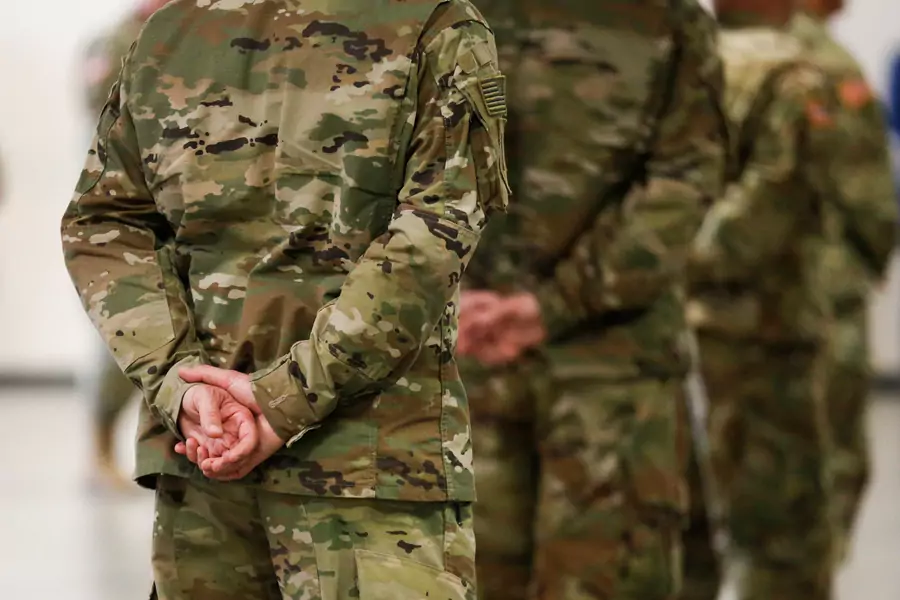Happy Birthday to the U.S. Army!

The United States Army celebrates its 245th birthday today. If you see an active duty, former, or retired member of the United States Army today, wish their service Happy Birthday.
The Army provides a short but thorough overview of its history on its website. Here are five things worth knowing:
More on:
- The Army is the oldest of the six services. It was created on June 14, 1775, making it four months older than the United States Navy, five months older than the United States Marine Corps, five years older than the United States Coast Guard, 172 years older than the United States Air Force (which began as part of the Army), and 244 years older than the United States Space Force (which was spun out of Air Force Space Command).
- Eleven Army generals have gone on to become president of the United States: George Washington (General), Andrew Jackson (Major General), William Henry Harrison (Major General), Zachary Taylor (Major General), Franklin Pierce (Brigadier General), Andrew Johnson (Brigadier General), Ulysses S. Grant (General), Rutherford B. Hayes (Major General, Brevet), James A. Garfield (Major General, Volunteers), Benjamin Harrison (Major General, Brevet), and Dwight D. Eisenhower (General). No Navy Admiral, Marine Corps General, or Air Force General has ever been elected president. (Chester A. Arthur was Quartermaster General of the New York State Militia at the start of the Civil War, but I don’t believe he was mustered into federal service.)
- The highest rank in the Army is General of the Armies of the United States. Only two men have held it: George Washington and John Pershing. Efforts to give General Douglas MacArthur the title failed. Washington got his title posthumously on July 4, 1976. During his lifetime, the highest rank he achieved was Lieutenant General. President Ford issued the executive order elevating Washington to six-star status because given the military’s strict hierarchy he was technically outranked by the four- and five-star generals who came after him. President Ford’s executive order directs that Washington shall always be considered the most senior U. S. military officer.
- The Medal of Honor has been awarded to a member of the Army 2,456 times. Put differently, approximately 70 percent of all 3,525 Medals of Honor awarded have gone to soldiers.
- There are roughly 475,000 active duty Army personnel.
I asked Colonel Michael J. Jackson, an active duty U.S. Army officer who spent the past year as a military fellow at CFR, for his recommendations on what to read to learn more about the Army. Here are his recommendations:
Mark E. Grotelueschen, The AEF Way of War: The American Army and Combat in World War I (2006). Col. Jackson explains that Grotelueschen’s book shows that back in 1917 “the United States Army was in no way prepared for war, but learned and quickly adapted to achieve victory.”
Rick Atkinson, An Army at Dawn: The War in Africa, 1942-1943, Volume One of the Liberation Trilogy (2003). Col. Jackson, an Army tanker, says that Atkinson shows “how difficult the North Africa Campaign was. Victory began in North Africa and crept north, but it was anything but certain and many hard lessons were learned along the way.”
Harold G. Moore and Joseph L. Galloway, We Were Soldiers Once...and Young: Ia Drang - The Battle That Changed the War in Vietnam (1992). Col. Jackson says that Moore and Galloway’s book “spans the full spectrum of experience and emotion from training, to combat, to the family’s experience through it all. Few other books capture what it means to be a part of the Army family and, simultaneously, the Army as a learning organization, like this book.” The book was turned into the 2002 film, We Were Soldiers, which featured Mel Gibson playing the role of Harold Moore, who was the battalion commander at the first major U.S. battle in the Vietnam War.
More on:
Col. Jackson also recommended three films to watch:
Fury (2014). Col. Jackson says Fury is “one of the best tank movies ever made. The movie captures how close a tank crew becomes, accurately portrays life inside the vehicle, and accurately shows how tanks are fought and maneuvered. Continuing the spirit of innovation and learning, the movie also captures how United States armored forces were radically outgunned [in World War II], but adapted to achieve victory.”
The Monuments Men (2014). Col. Jackson says that the lesson of this story of a World War II Army platoon tasked with rescuing rare art is that “while war destroys, culture is only enduring if it is preserved.”
A Bridge Too Far (1977). Col. Jackson says the film captures the idea that “bringing a conclusion to World War II required risk. Ultimately, the Allies would win, but this classic film highlights just how uncertain victory was.”
Anna Shortridge assisted in the preparation of this post.
 Online Store
Online Store